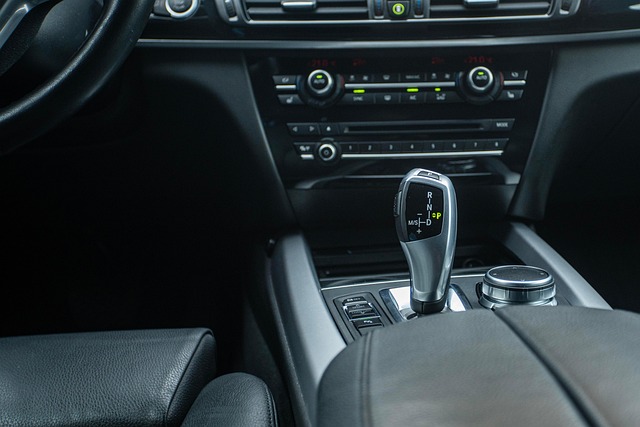Looking to register your car in California? Our step-by-step guide makes the process clear. First, understand California’s unique car registration requirements, including the need for a valid title and a completed DMV VIN verifier form. Gather essential documents like proof of insurance and identification. You can either visit a local DMV office or utilize online services for convenience. After filling out the vehicle registration application, pay the required fees and receive your personalized license plate.
- Understand California Car Registration Requirements
- Gather Necessary Documents for Car Registration
- Visit a California DMV Office or Use Online Services
- Complete and Submit the Vehicle Registration Application
- Pay Car Registration Fees and Receive Your Plate
Understand California Car Registration Requirements

Before registering your car in California, it’s crucial to understand the state’s specific requirements. The California Department of Motor Vehicles (DMV) enforces stringent regulations to ensure vehicle safety and legitimacy. One key aspect is the verification of a Vehicle Identification Number (VIN). This unique 17-character code serves as a fingerprint for your car, and its accuracy is vital during the registration process.
A reliable method to confirm the VIN’s validity is through a mobile vin inspection or mobile vin verifier. These services allow you to check the VIN against state databases, ensuring it matches the recorded information. This step is essential as incorrect or altered VINS are strictly prohibited. By utilizing these modern tools, such as a mobile vin verification, you can navigate the registration process smoothly and avoid any potential issues.
Gather Necessary Documents for Car Registration

Before heading to the DMV for car registration, it’s essential to gather all necessary documents. This includes your vehicle’s registration certificate from the previous state (if applicable), proof of insurance, and a valid driver’s license. Additionally, you’ll need the Vehicle Identification Number (VIN) from your car, which can be found on the vehicle’s title or by using a DMV VIN verifier or even a mobile vin verifier app for a quick and convenient mobile vin verification or inspection.
Make sure you have all these documents ready before you start the registration process. It saves time at the DMV and ensures a smoother experience. Remember to check with your local California DMV office for any additional requirements or specific forms needed based on your vehicle type or other factors.
Visit a California DMV Office or Use Online Services

You have two convenient options when it comes to registering your car in California: visit a DMV office or utilize online services. If you choose to go in-person, head over to any California Department of Motor Vehicles (DMV) location, where knowledgeable staff can guide you through the process. Alternatively, you can save time by using the DMV’s online platform, which offers various registration services, including a convenient mobile VIN verifier.
For those who prefer a digital approach, many mobile VIN verifiers are available that allow you to complete a car registration from the comfort of your home or even while on the go. These tools cross-reference your Vehicle Identification Number (VIN) with state records to ensure the vehicle’s history is clear and eligible for registration. This step is crucial in ensuring a smooth and legal car registration process in California.
Complete and Submit the Vehicle Registration Application

After gathering your required documents and passing the smog test, it’s time to complete and submit your Vehicle Registration Application (VRA). This form is available online or at any California Department of Motor Vehicles (DMV) office. Make sure to fill out all sections accurately and completely. One crucial element is the Vehicle Identification Number (VIN), which can be verified using a DMV-approved VIN verifier, such as a mobile VIN inspection tool.
You’ll need to provide detailed information about your vehicle, including its make, model, year, and color. Additionally, you’ll input your personal data, ensuring everything matches your driver’s license and other official records. Once the VRA is completed, submit it along with the necessary fees to either the DMV or a licensed agent, depending on your situation.
Pay Car Registration Fees and Receive Your Plate

After completing your vehicle’s registration application, the next step is to pay the required fees. The California Department of Motor Vehicles (DMV) will calculate the total cost based on your specific vehicle and usage. This typically includes a base fee, emissions testing, and other mandatory charges. You can opt for various payment methods, such as cash, card, or online payments, ensuring a secure transaction through the DMV’s official channels. Once processed, you’ll receive your registration document and, in most cases, a unique license plate.
For added convenience, many Californians choose to conduct a mobile vin verification process to ensure their vehicle’s details are accurate. This involves using a specialized tool that checks the Vehicle Identification Number (VIN) against official records. A mobile vin inspection or verification service can be particularly useful when preparing your car for registration, ensuring all information is up-to-date and correct before you visit the DMV.
Registering a car in California is a straightforward process, ensuring your vehicle is road-ready. By understanding the state’s requirements, gathering essential documents, and either visiting a DMV office or utilizing online services, you can efficiently complete the registration. A crucial step involves using a DMV VIN verifier to ensure all details are accurate. Once your application is approved, pay the required fees, and you’ll receive your vehicle plates, legalizing your car for California’s roads.
